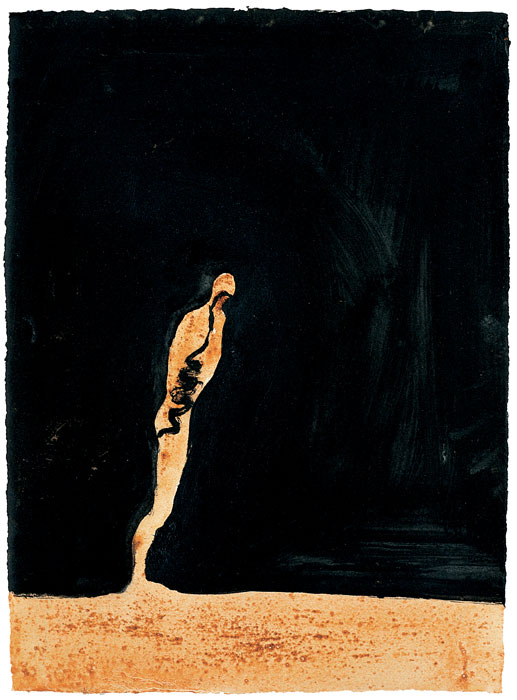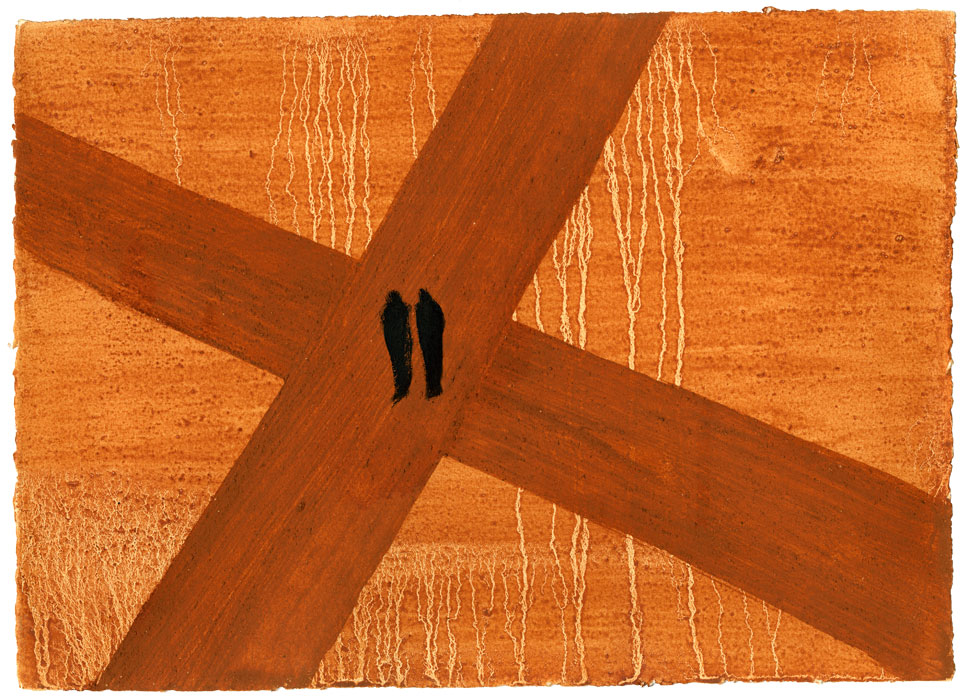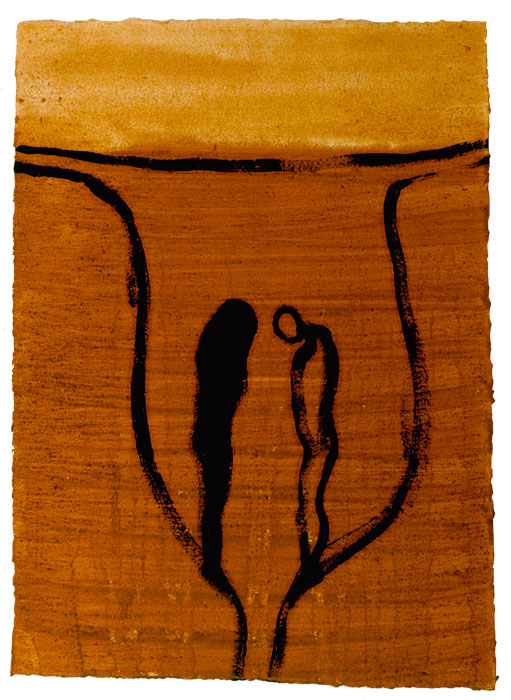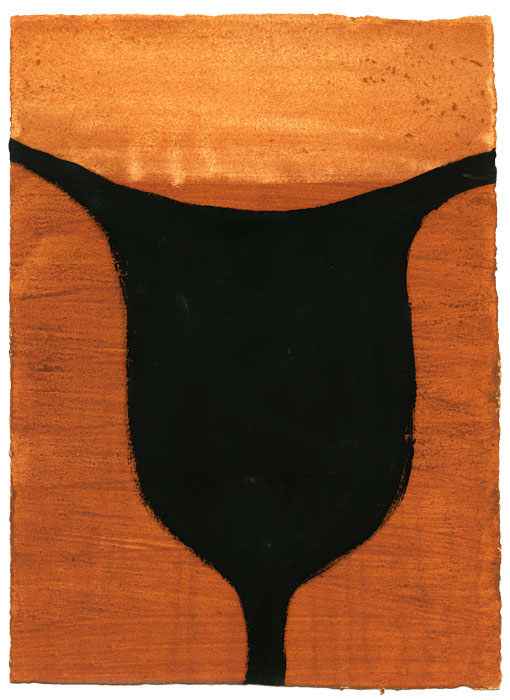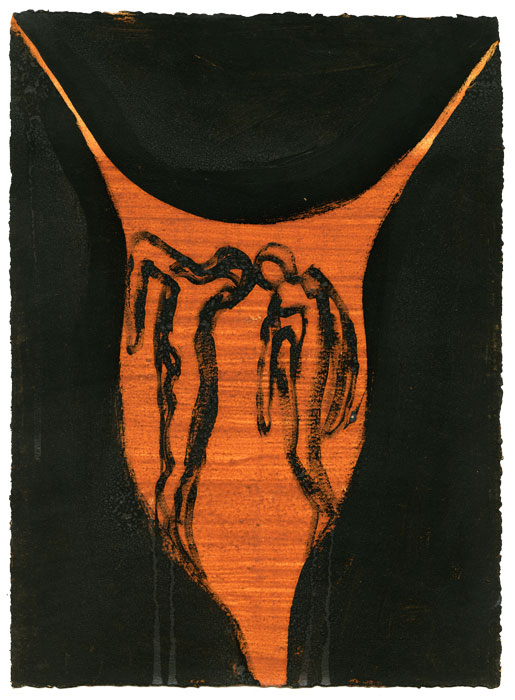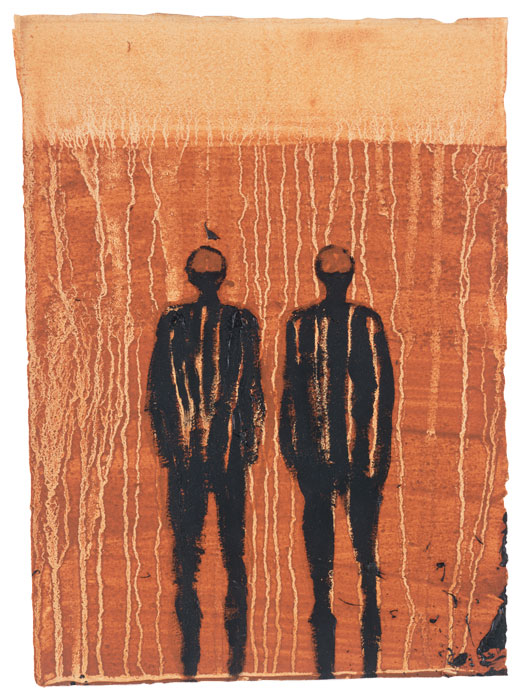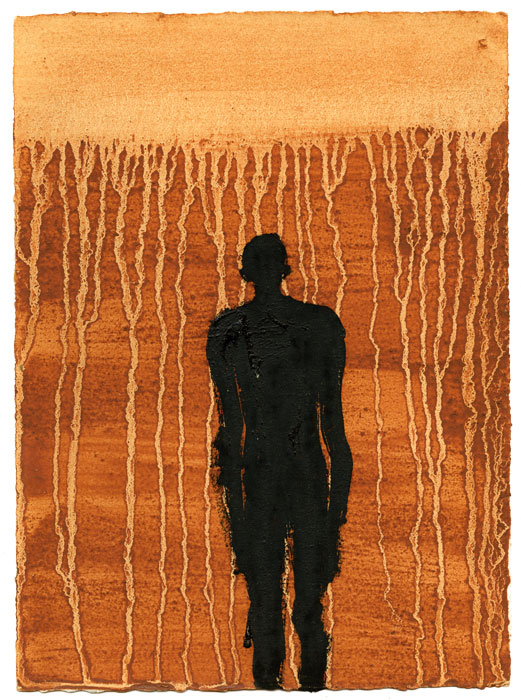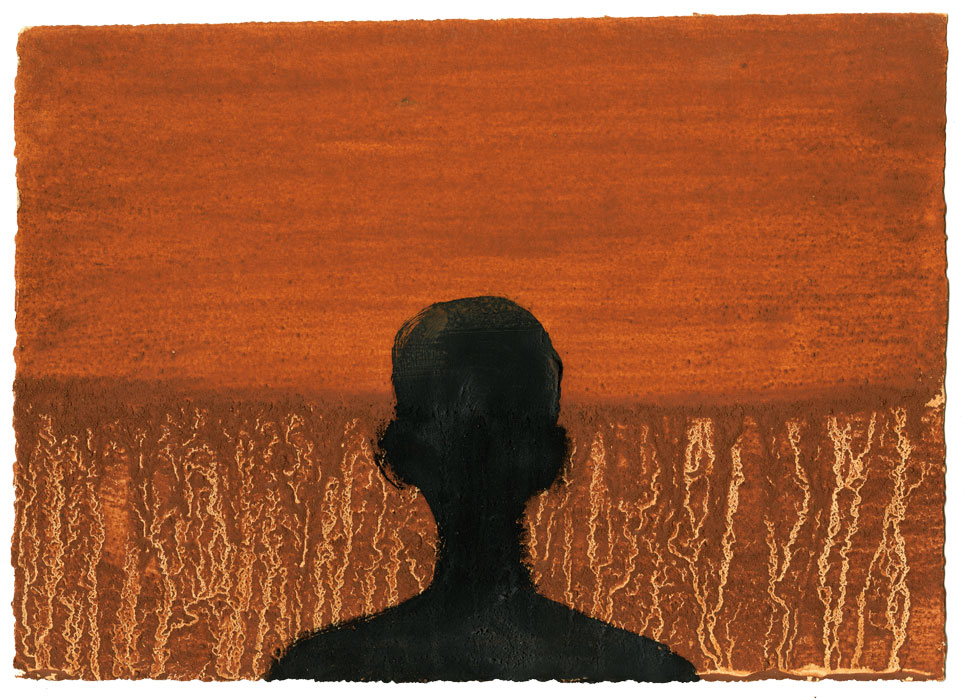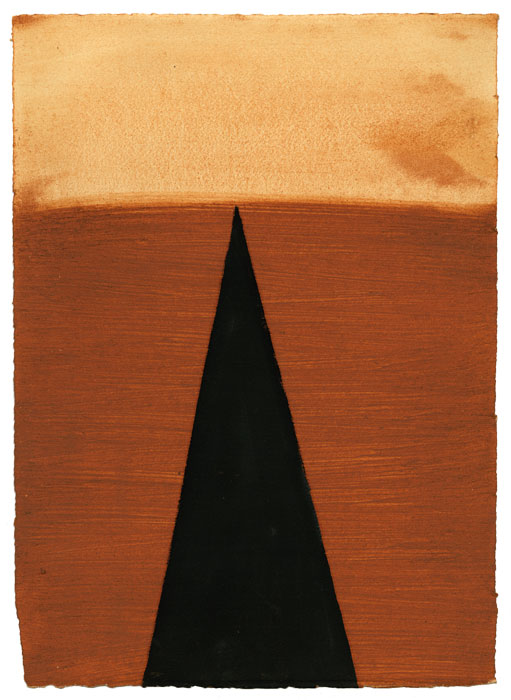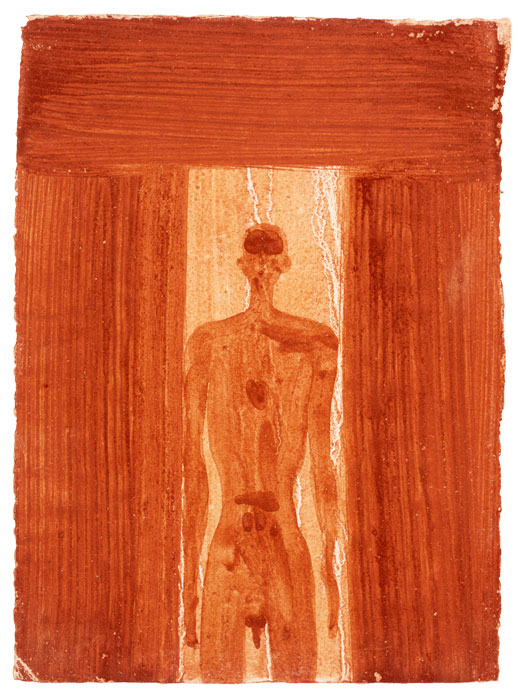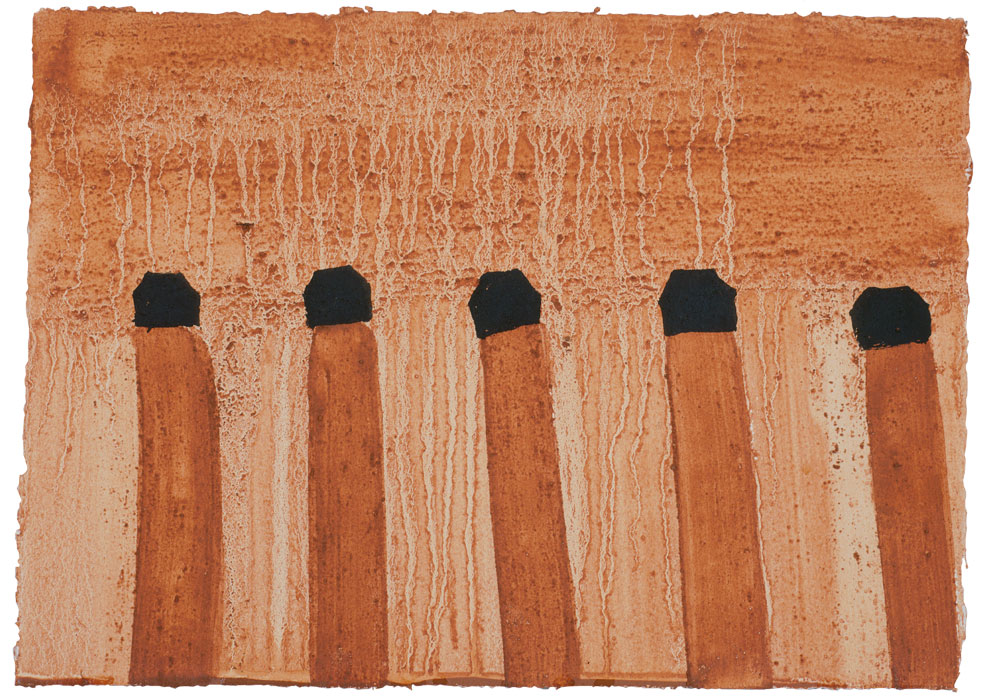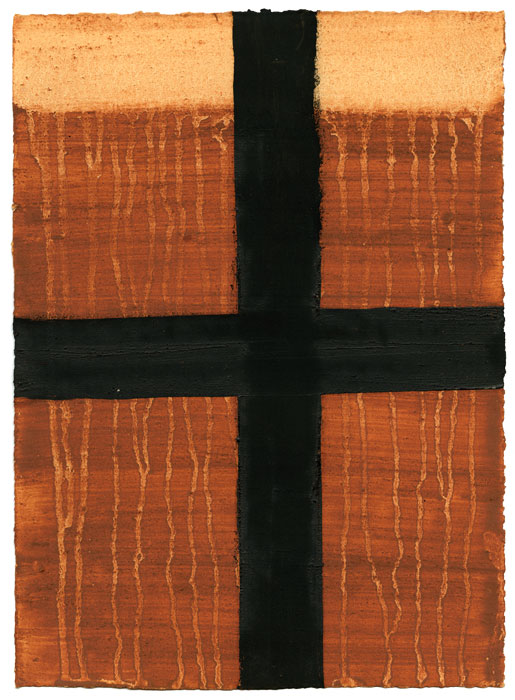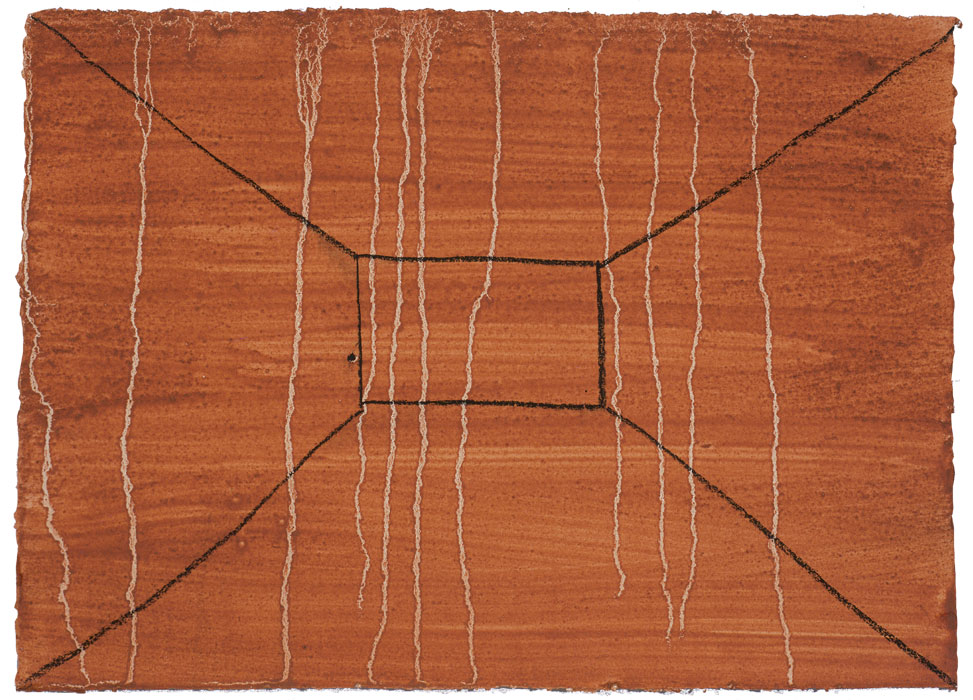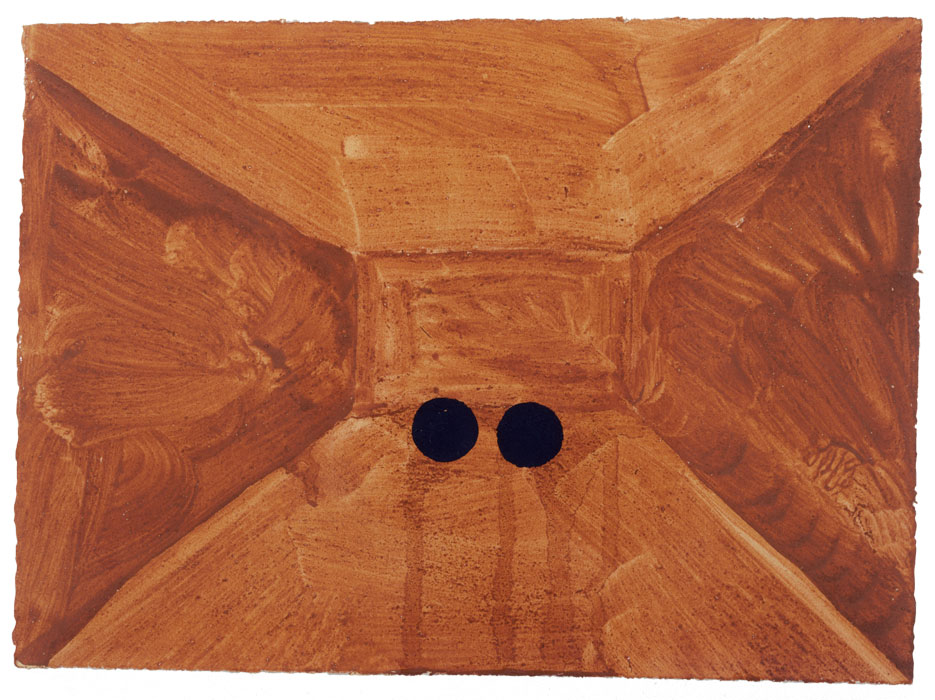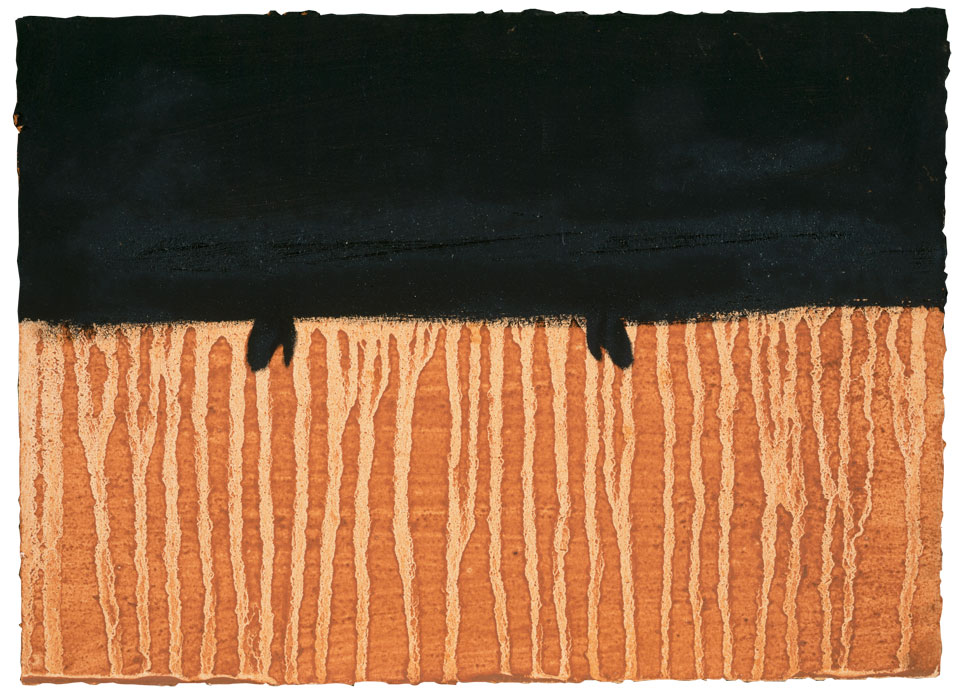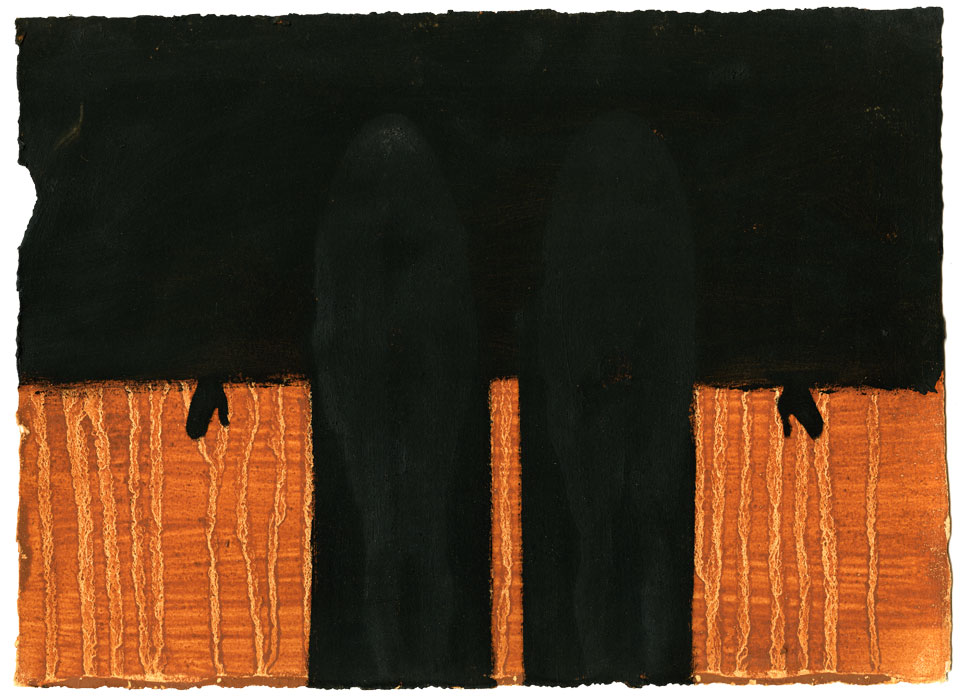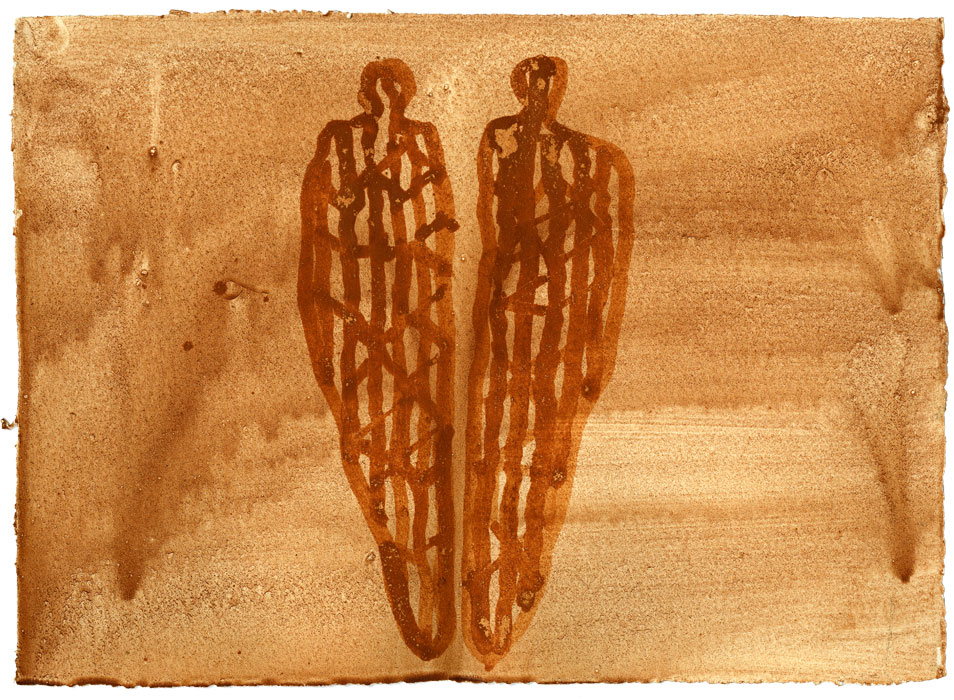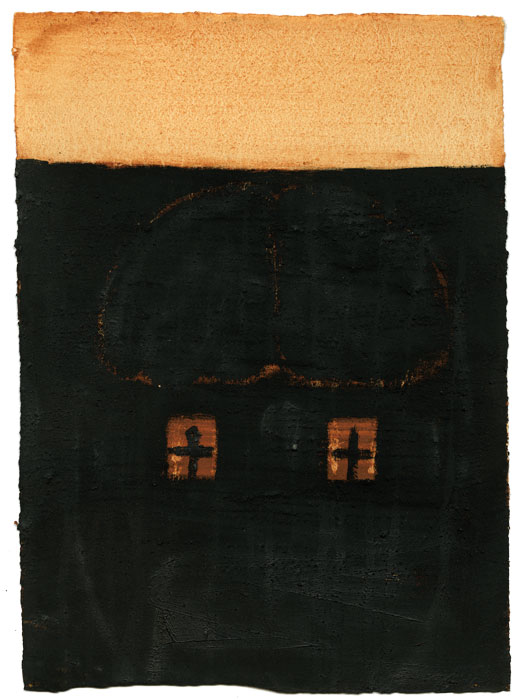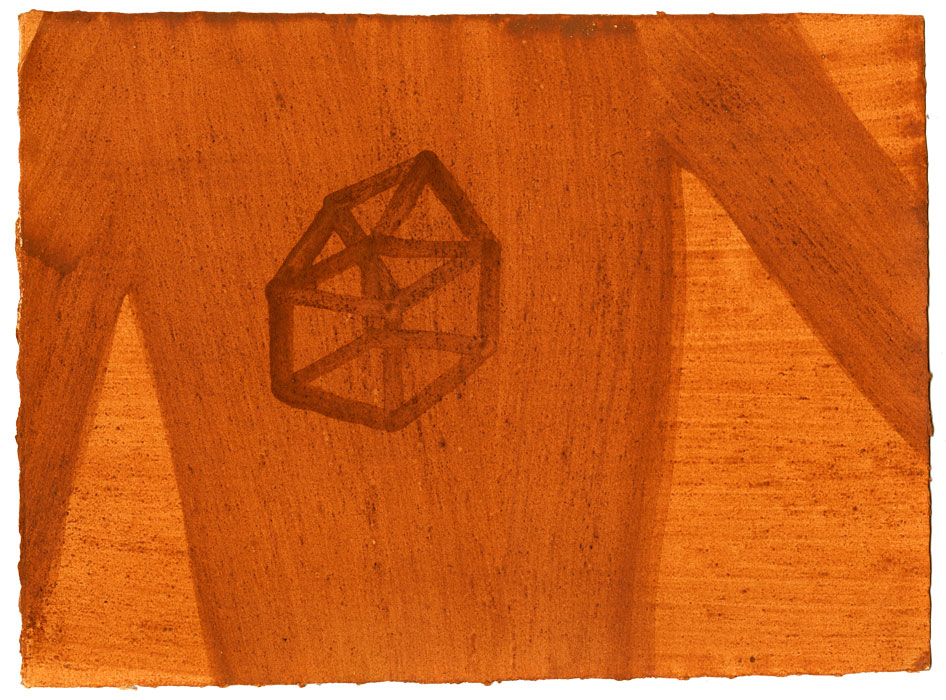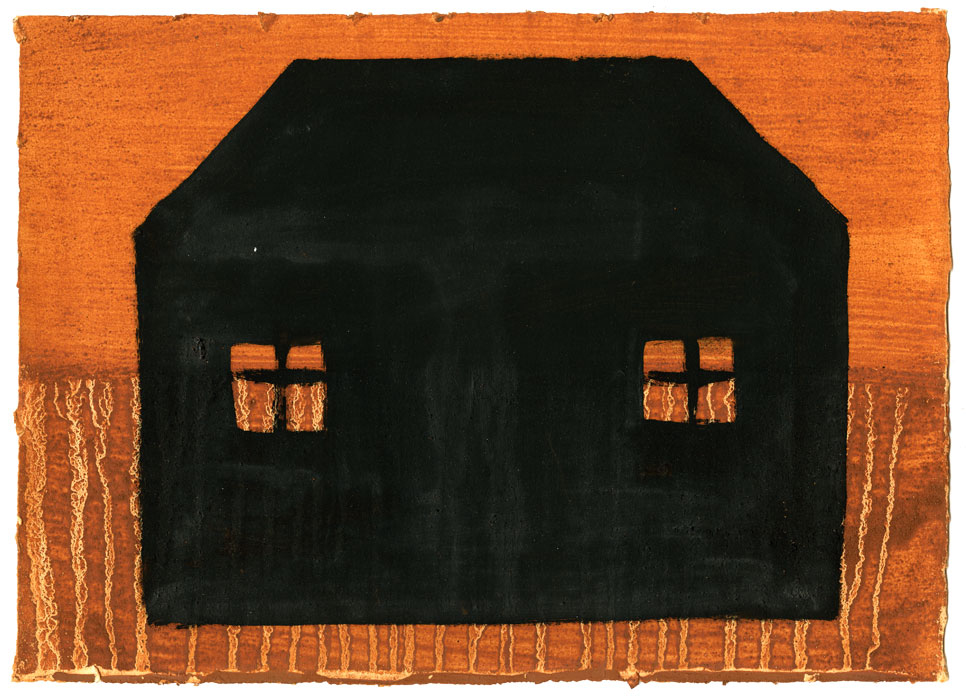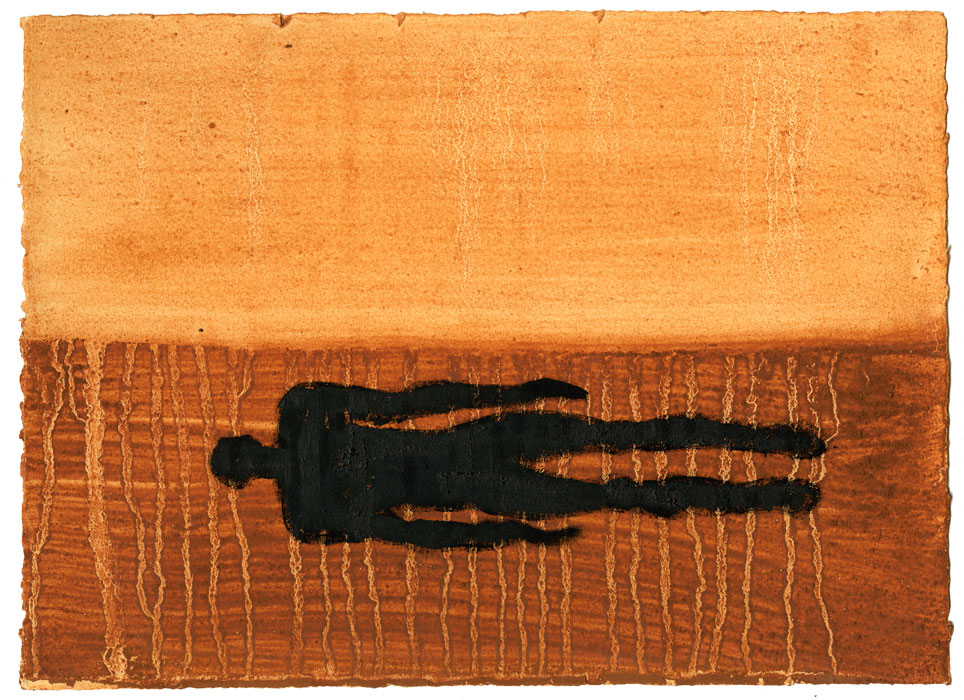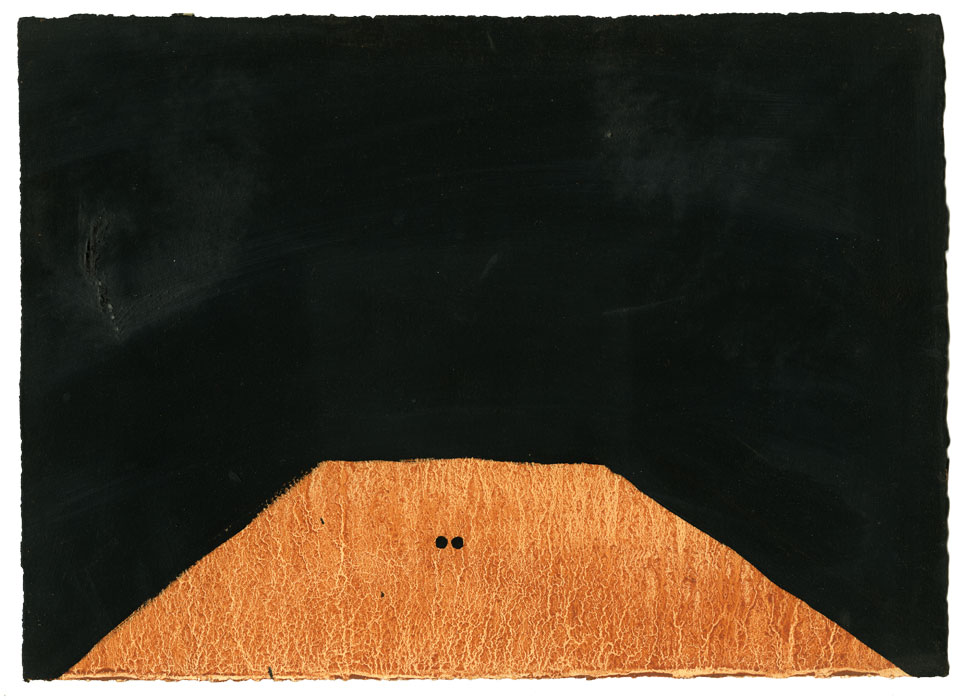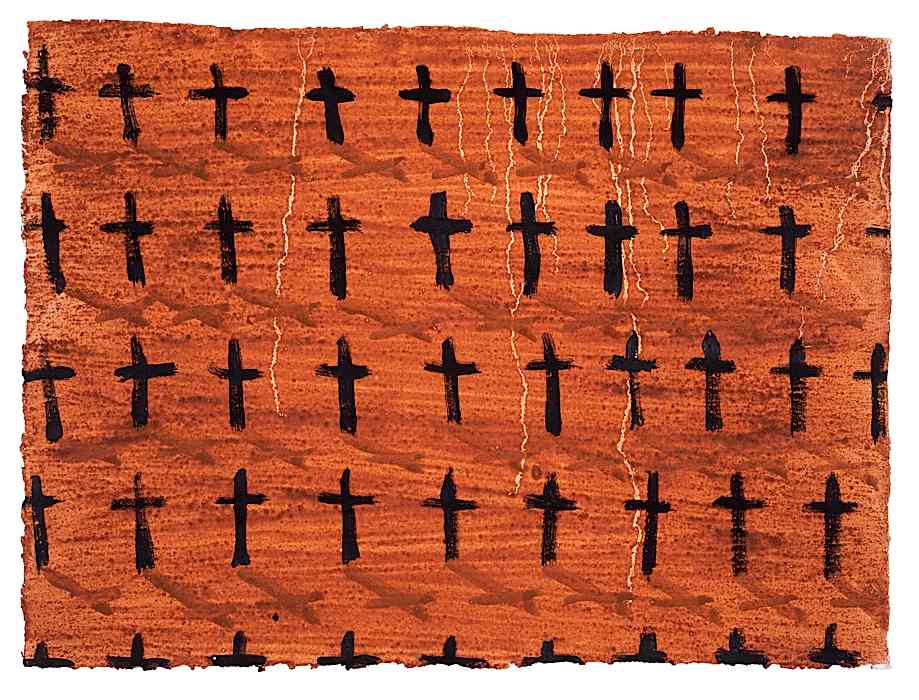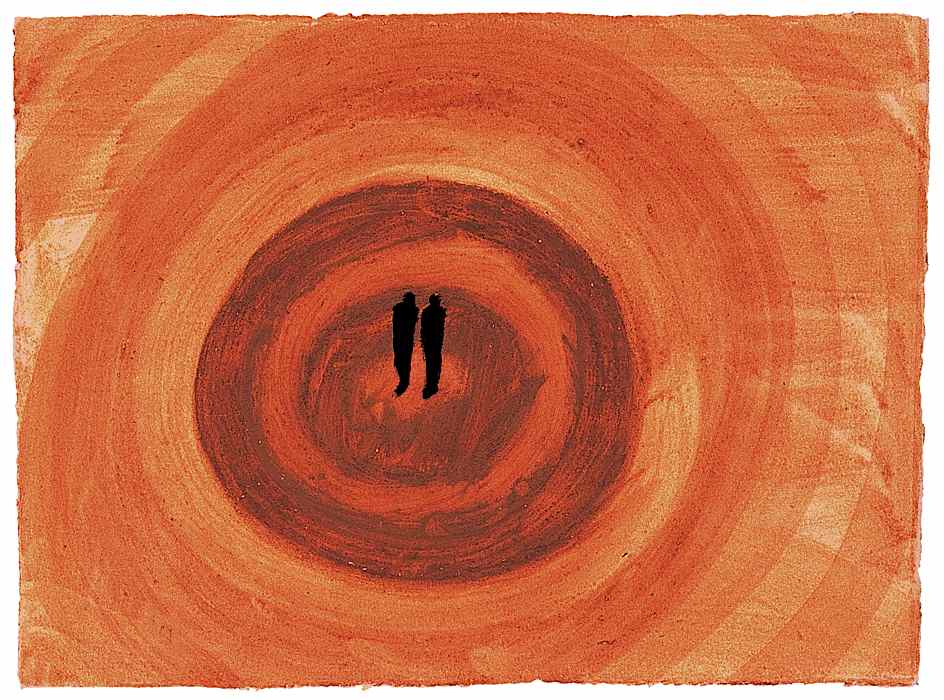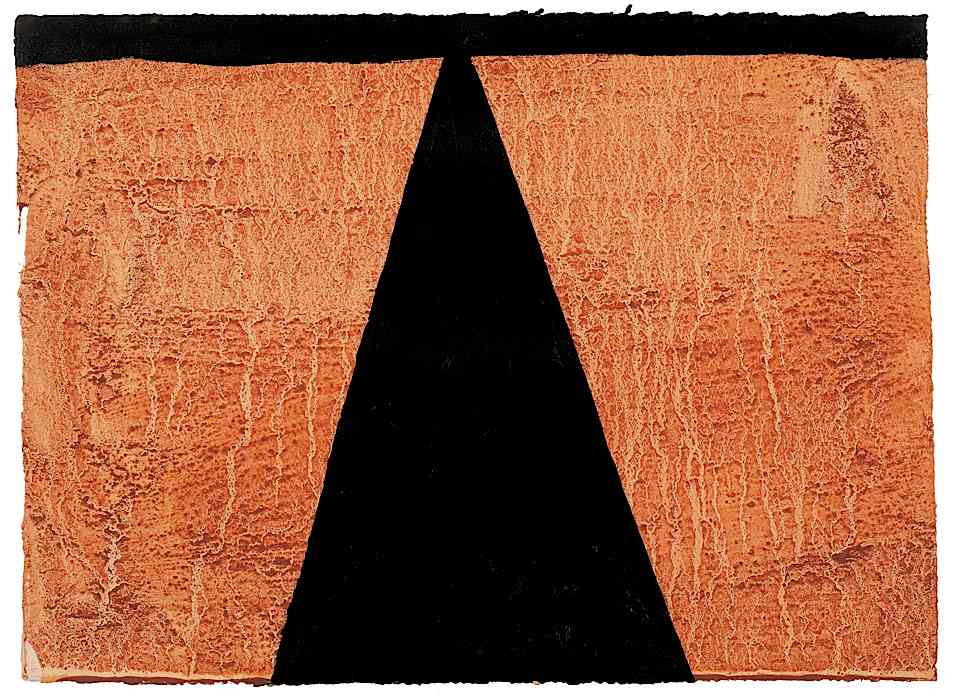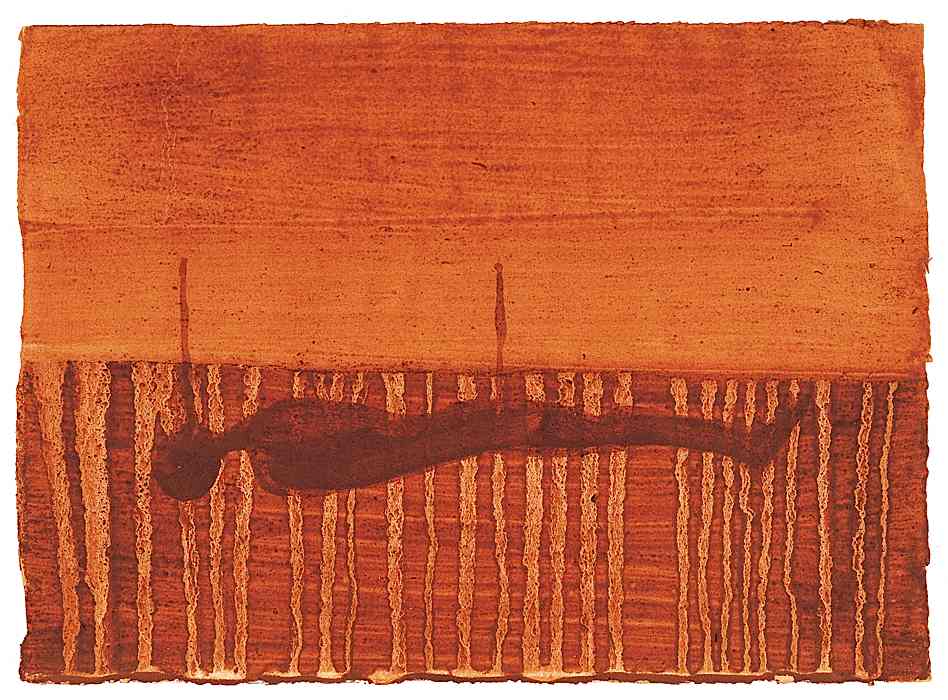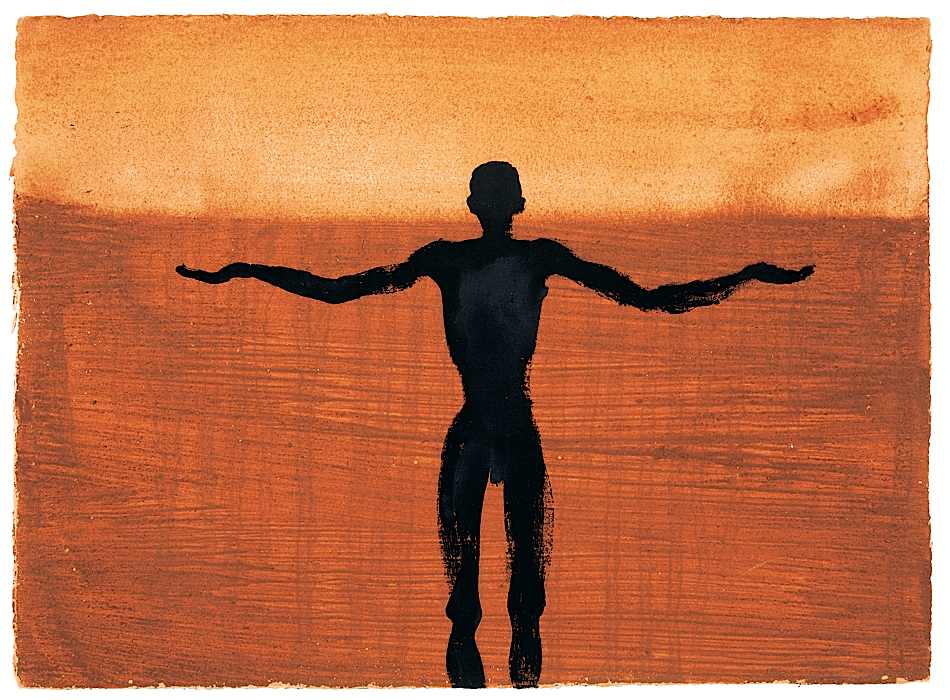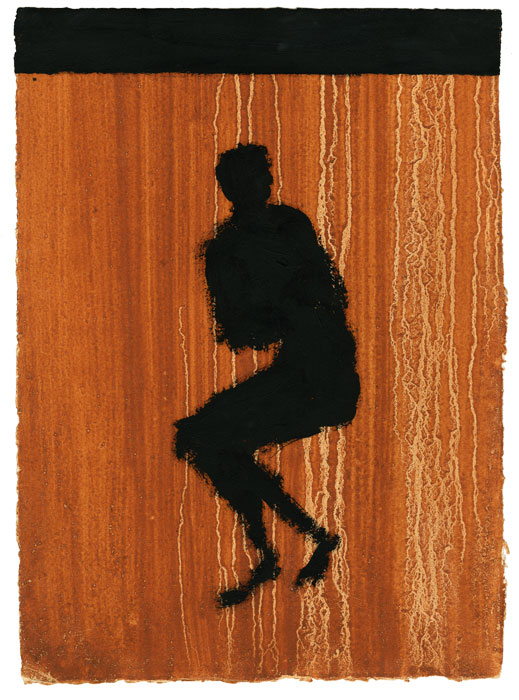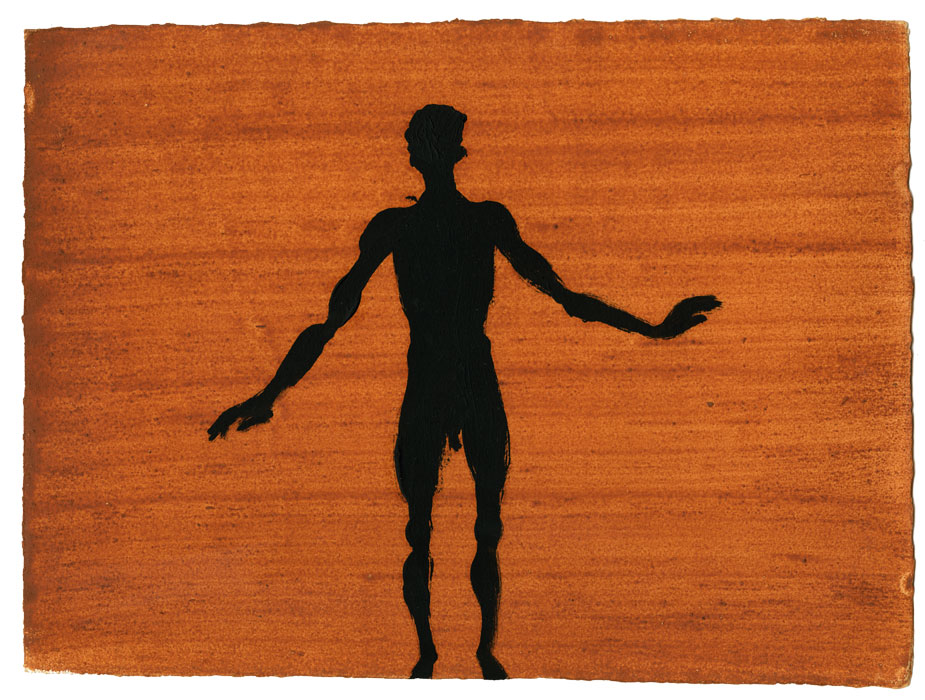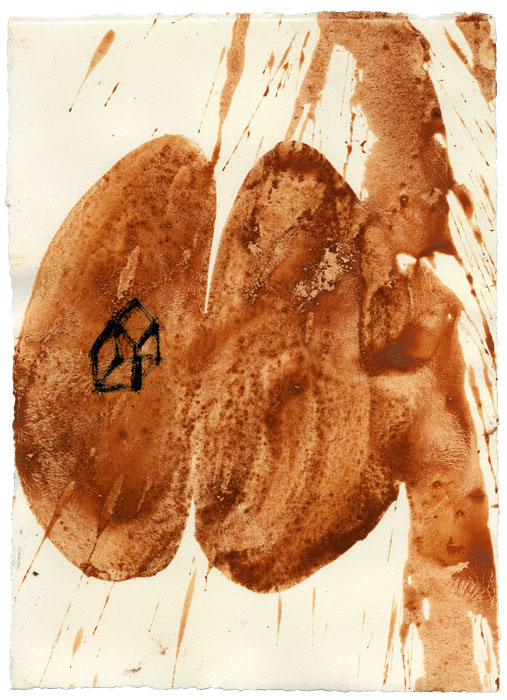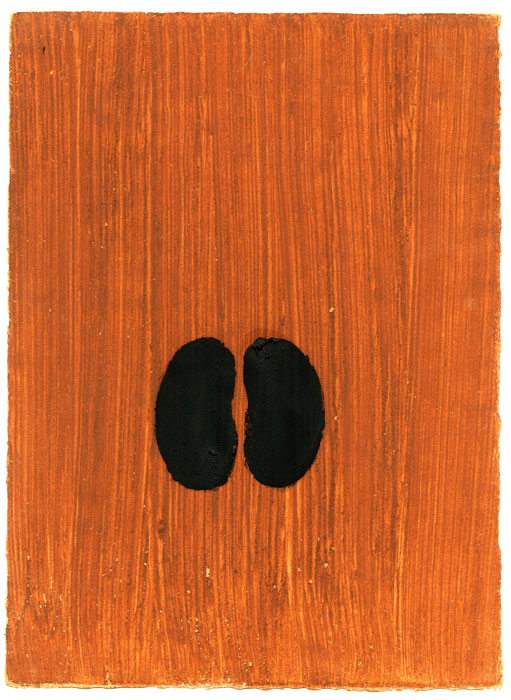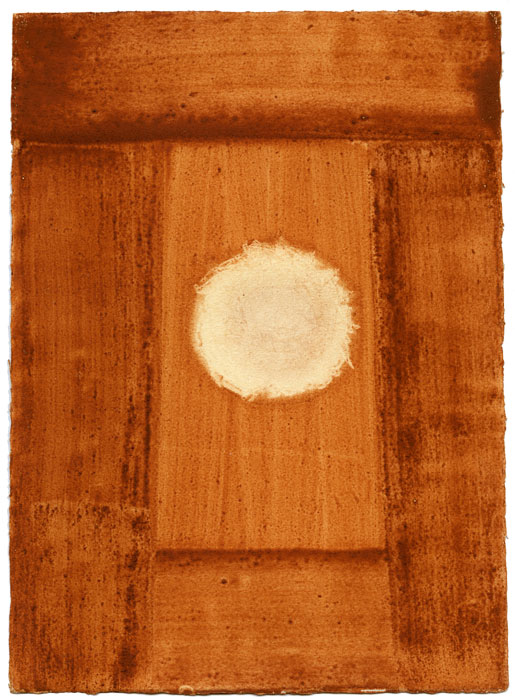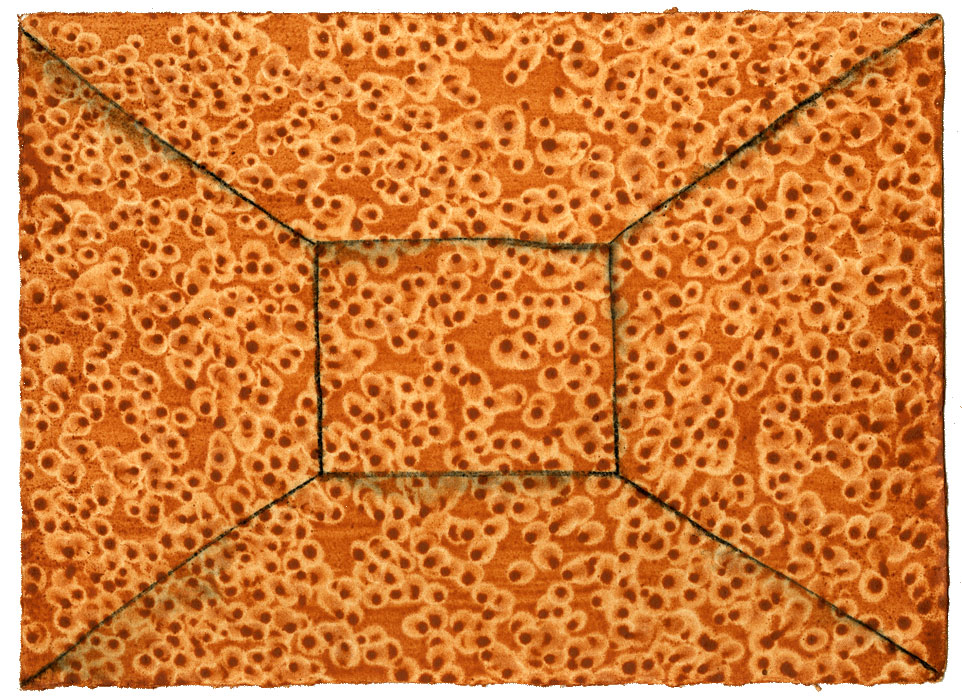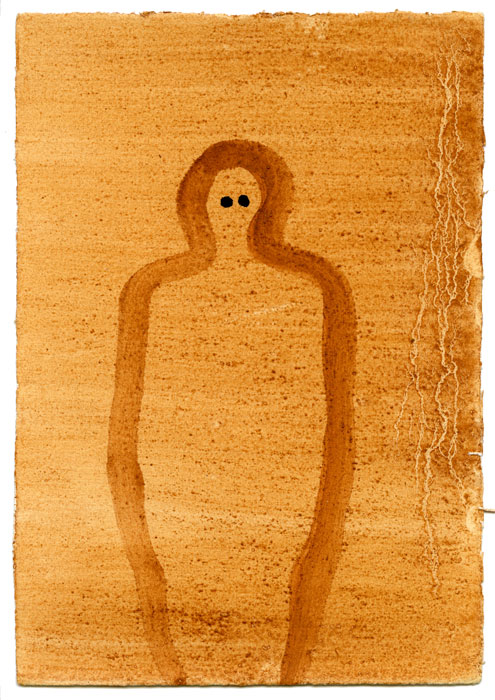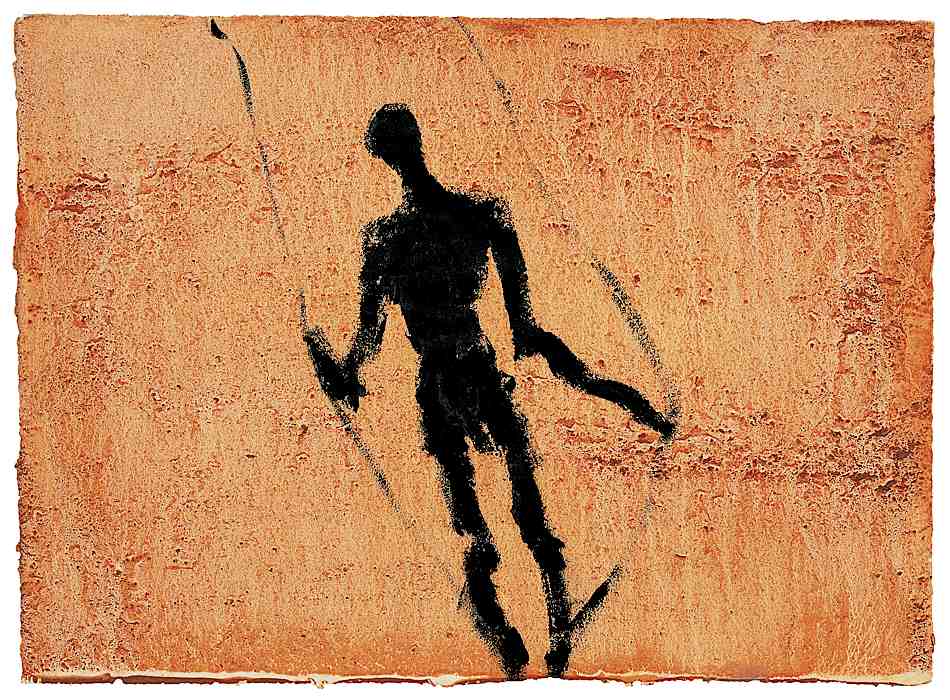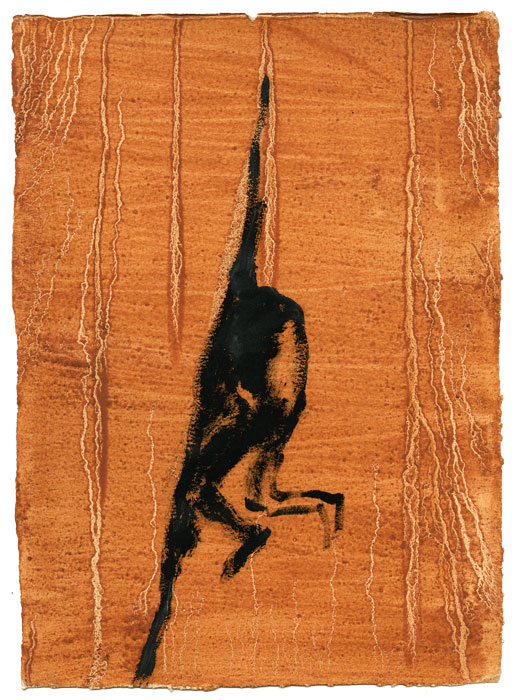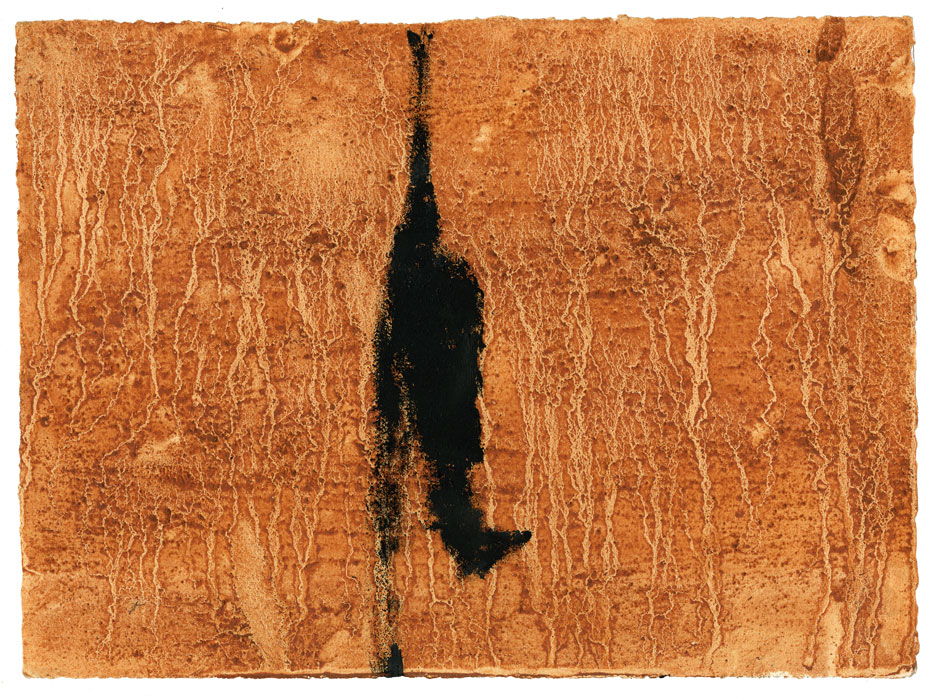'The drawings in this series are made from red-coloured earth collected originally by the artist from the Lot region in France and mixed with rabbit skin glue and water. Black pigment is still present - used either to shade in entire areas or to pick out individual elements within the composition. Some of the imagery imaginatively anticipates encounters with the desert, the scale and breadth of the outback, the appearance of aboriginal skin painting and spirit dances, as well as the individual clay forms that would comprise FIELD FOR THE ART GALLERY OF NEW SOUTH WALES, 1989 (his installation of 1,100 small individually fashioned terracotta figurines). The graphic 'imaginings' were made prior to his first encounter with Australia in 1989. In fact, since his travels in India in the 1970s, Gormley had been seeking to test his own classic Western frame of reference against other traditions - an impulse that was given further impetus in the early 1980s by his encounter with Joseph Beuys's notion of a widened field of art and call for an anthropological art. For Gormley this meant that putting art "to the practical service" of life in order to "make something with power". The use of earth has a long prehistoric tradition in terms of mark-making, and this ties in with the artist's notion that "drawing is a site where something has occurred geologically". The drawings are thus a powerful repository of thought and reflection in terms of both historical and pre-historical concerns.'
Text by Anna Moszynska, from ANTONY GORMLEY DRAWING, published by The British Museum Press, London, 2002


